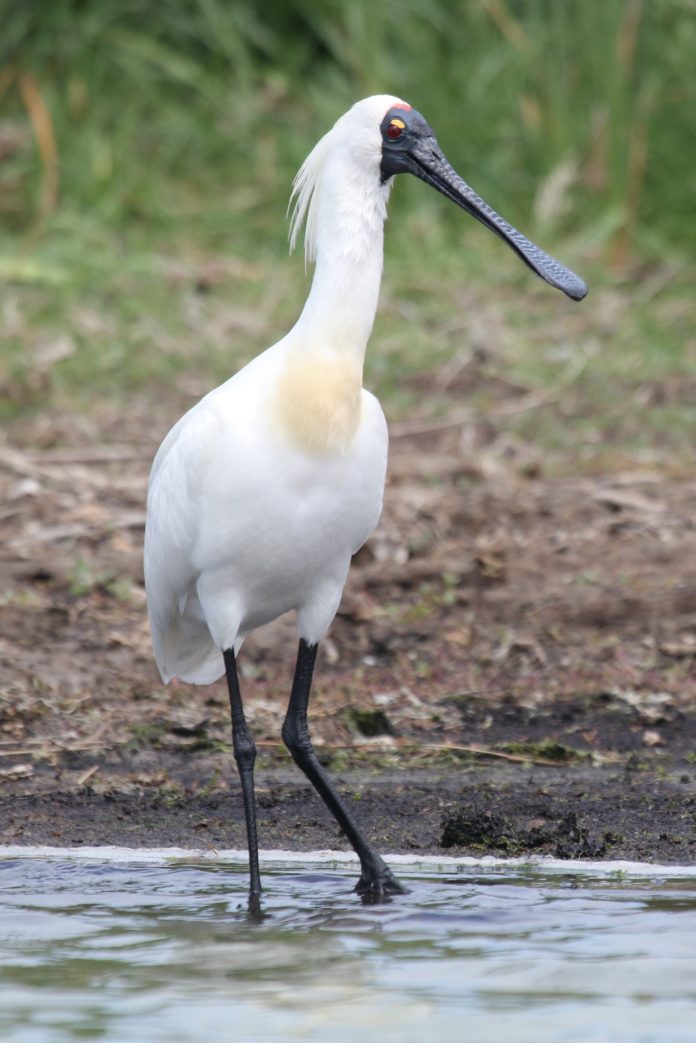White feathers, a black spoon for a beak and a striking hairdo – the distinctive royal spoonbills are finding conditions to their liking in the Ashburton District.
Riverbridge Conservation Park’s wetlands are currently home to 28 of the birds.
“They come and go but are here most of the time,” says Russell Langdon, owner of Riverbridge. “It’s a perfect feeding spot for them – there’s plenty of invertebrates for them in the shallow ponds.”
The birds have been coming to Riverbridge for quite a few years, says Russell. “Sometimes numbers go down to two, then back up to 30.”
They’ve also been seen in the lower reaches of the Ashburton/ Hakatere river and at the river mouth.
Royal spoonbills are tallish birds – their long legs allow them to wade effortlessly through ponds, wetlands and estuaries, searching the water for food. They like water less than 40cm deep which suits their method of finding food.
Spoonbills are vibrational feeders – they feel the prey moving through the water with fine sensors inside their spoonshaped beak, which they move from side to side. This ability means they can feed in murky water or at night – they don’t need to see what’s there.
Russell thinks all the birds at Riverbridge are adults, but so far they haven’t nested.
“They fly up and land in the pine trees so they might be looking for nest sites. This morning some were in the tall kanuka trees – they were quite a sight.”
They are becoming a more common sight around New Zealand, with Coastal Otago being a bit of strong-hold. They feed on the fish and crustaceans in the estuaries and nest in trees not far from the sea.
The spoonbills are Australian immigrants blown over in storms. It’s amazing that any would survive such conditions but it’s more than the odd individual; enough have arrived on the westerly winds to establish breeding colonies.
Apparently that’s how many species have arrived in Aotearoa. The Australasian harrier, crested grebe, silvereye and spur-winged plover have all hitched a ride on the wind and are now considered native New Zealanders.




